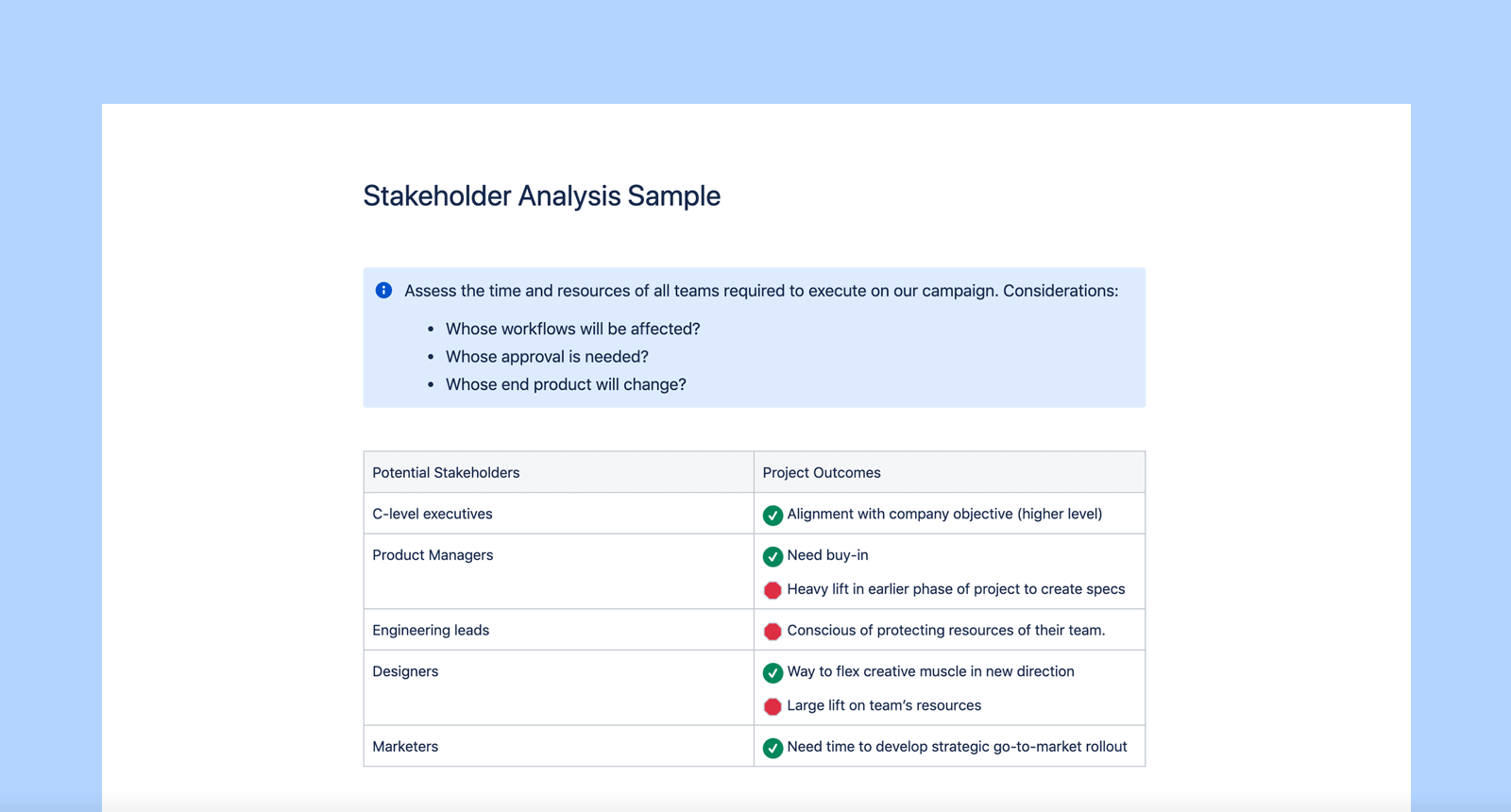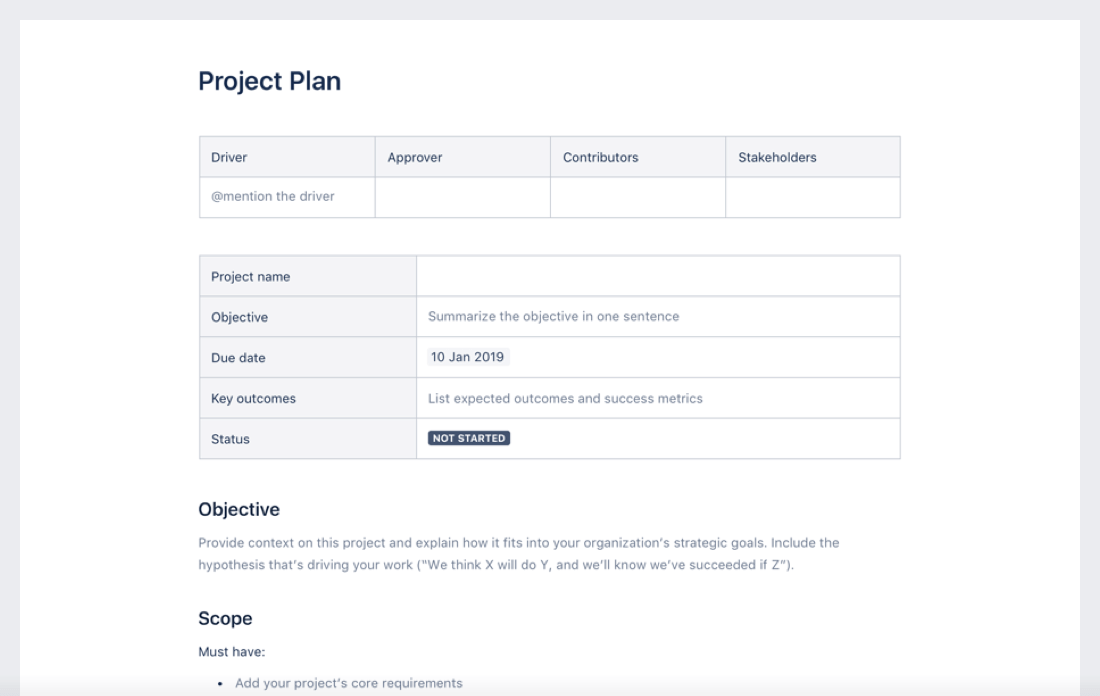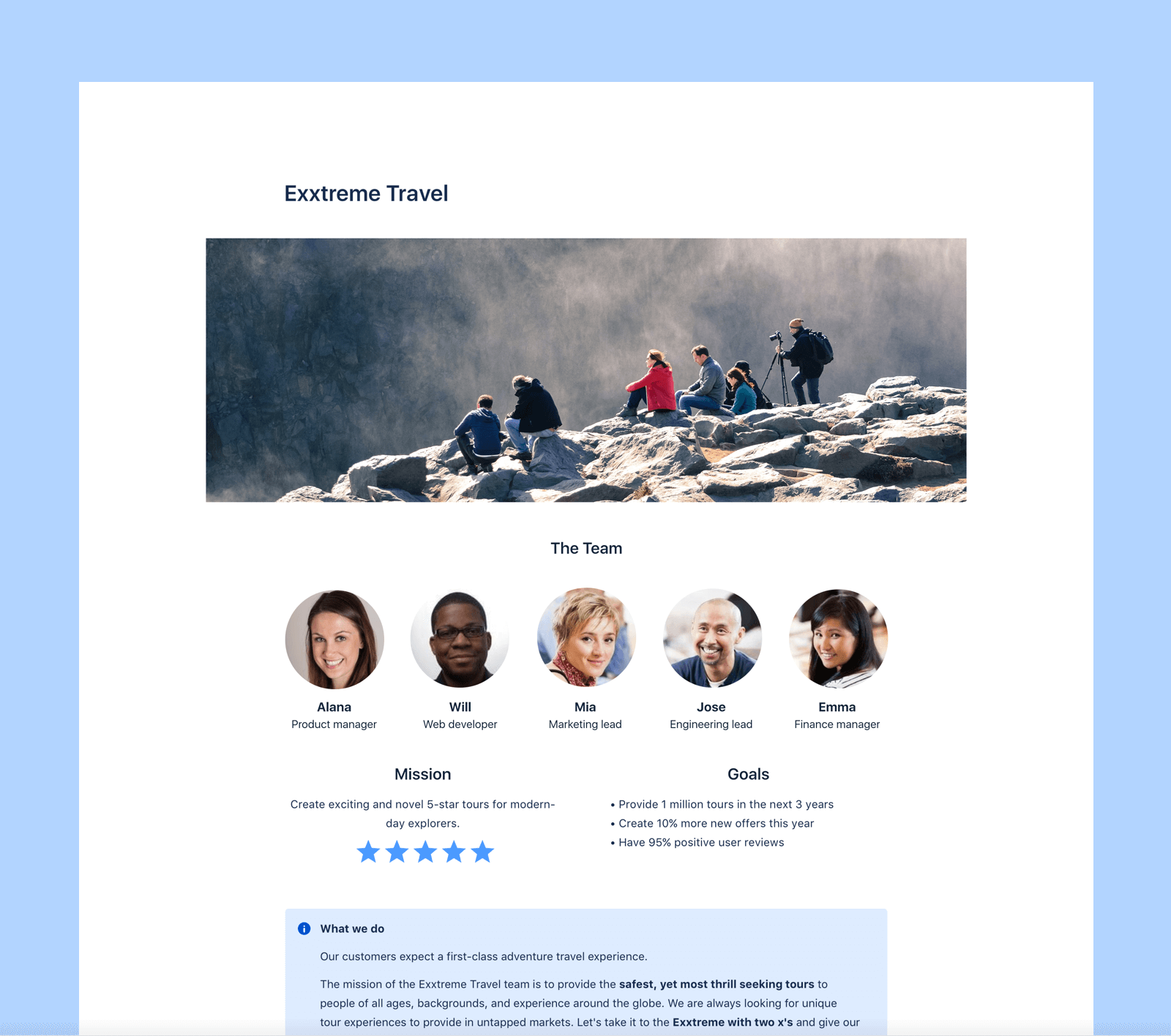The ultimate guide to stakeholder management
By Aumarie Benipayo
As marketers, our projects are rarely confined to just our own teams. We work with the product team to promote new features, design to provide graphics for our blog posts, or the web team to make sure that our landing pages actually work. So, to be a good marketer, you also need excel in stakeholder management.

Identify stakeholders
As you prepare to launch a project involving other people, conduct a stakeholder analysis and determine roles and responsibilities early.
Practically, this looks like a good old-fashioned brainstorm where you consider and assess who this project’s outcomes are going to directly impact:
Whose workflows will be affected
Whose approval you’ll need to complete the project
Whose end product will change
Conduct a stakeholder analysis
Create a grid with potential stakeholders on the left axis of the page and potential project outcomes across the top of the page. Fill in what those project outcomes would mean for your stakeholders. Use this information to help you decide which stakeholders you’re inviting directly into the project.

Document roles and responsibilities
Defining roles will help give stakeholders clarity about what skills, insight, and time they need to bring into a project. This will also minimize the amount of “empty space” that a stakeholder might perceive in the project’s process. Use documentation to solidify those roles and keep them top of mind throughout your project.
Struggling with managed dependencies or role confusion? Use the roles and responsibilities play to clarify who is doing what.
Enhanced project success
At Atlassian, we put a 2x4 table at the top of every project-related document in Confluence so that everyone always knows where they stand. Using the DACI framework, we assign:
- A driver: who is in charge of managing stakeholders and making sure decisions are made on time.
- An approver: who has the final say in decision-making.
- Contributors: who can offer expert opinions for consideration or are directly involved in the project.
- Informed stakeholders: who are notified of decisions.

Create a DACI right from the start for every project or campaign. That’s not to say you need to be rigid. Just set expectations up front for who needs to be consulted for a sign off and who has ultimate responsibility for getting it all done.
Better risk management
Stakeholder management helps identify potential risks and issues early in the project life cycle. Engaging with stakeholders allows project managers to anticipate and reduce risks before they escalate into major problems. Stakeholders can also provide insights into potential challenges.
Improved communication
Stakeholder management facilitates open and transparent communication between the project team and stakeholders. Regular communication keeps stakeholders informed about project progress, changes, and decisions. This transparency builds trust, fosters project collaboration, and ensures everyone remains on the same page. Effective communication also allows stakeholders to provide feedback and input.
Efficient conflict resolution
Stakeholder management helps identify and resolve conflicts between stakeholders with competing interests or priorities. Engaging stakeholders in open dialogue and negotiation can lead to mutually beneficial solutions. Project managers can use stakeholder analysis to understand power dynamics and the influence of different stakeholders.
Sustainable long-term relationships
Effective stakeholder management builds solid and long-lasting relationships between the company and its stakeholders. Regularly engaging with stakeholders, addressing their concerns, and delivering value fosters trust and loyalty. These positive relationships can lead to future opportunities, partnerships, and support for the company’s initiatives.
Get the kick-off right
Setting roles and responsibilities only works if everyone understands how those roles support your project's desired outcome.
Setup a kickoff meeting to ensure buy-in, set stakeholder expectations, determine a check-in cadence, and communicate how decisions will be made. Build your meeting around feedback and keep your talk-time to a minimum. Give an overview of the project in the beginning, but let this be the opportunity to let stakeholders poke holes in your plan and your management strategy.
Use the project plan template in Confluence to outline your project and review in your kickoff meeting.

Identifying stakeholders
With a great kickoff meeting, you can make sure all of your stakeholders are on the same page before a project begins, and facilitate good relationships across the various teams.
Analyzing stakeholders
Defining roles gives stakeholders clarity about the skills, insight, and time they need to contribute to a project. It also minimizes the perceived “empty space” in the project’s process. Use documentation to solidify those roles and keep them at the top of your mind throughout the project.
Atlassian places a 2x4 table at the top of every project-related document in Confluence so everyone knows where they stand. Atlassian uses the DACI framework to assign the following roles:
- A driver manages stakeholders and ensures timely decision-making.
- An approver has the final say in decision-making.
- Contributors offer expert opinions or direct involvement in the project.
- Informed stakeholders receive notifications of decisions.
Methods for stakeholder analysis include the following:
- Influence/impact grids: Plot stakeholders on a grid based on their level of influence and the project’s effect on them, which helps prioritize stakeholders and determine engagement strategies.
- Salience model: Assess stakeholders based on their power, legitimacy, and urgency. This helps identify key stakeholders who require the most attention and engagement.
- Stakeholder mapping: Develop a visual representation of stakeholders, their relationships, and their influence on the project. Stakeholder mapping helps identify key players, potential allies, and potential roadblocks. A flowchart is great for this task.
- SWOT analysis for stakeholders: Conduct a SWOT (strengths, weaknesses, opportunities, threats) analysis for each stakeholder or stakeholder group to provide insights into how to best engage with stakeholders and address their concerns.
Engaging stakeholders
To properly engage stakeholders, you need to develop a plan for communication:
1. Get the kick-off right
Set communication expectations during the project kick-off meeting to ensure buy-in, determine a check-in cadence, and outline the decision-making process. Build this meeting around feedback while minimizing presentation time. Use a project roadmap to outline and review your project.
2. Centralize information sharing
Laying out all the relevant information for stakeholders communicates trust and eliminates unnecessary questions and meetings. It also empowers them to make decisions quickly and offer faster problem-solving.
Confluence offers easy access to information in a centralized documentation hub. These spaces showcase the project overview, goals, project scope, milestones, team member roles and responsibilities, recently updated pages, and relevant links.
3. Establish a communication strategy
Set a plan for communicating with stakeholders, or you’ll find yourself checking in “as you think of it,” which is exactly what you want to avoid. Setting dates, determining methods, and documenting check-ins are necessary for effective stakeholder management.
Handling stakeholder expectations
To manage stakeholders effectively, set realistic expectations from the outset. Communicate the project’s scope, objectives, deliverables, limitations, constraints, and potential risks.
When handling resistance to change, first identify concerned stakeholders. Proactively address their issues by communicating the benefits and necessity of the change. Focus on how it aligns with their interests. Involve resistant stakeholders in decision-making. This fosters a sense of ownership and buy-in. Provide training, support, and resources to help them adapt to the change.
Throughout the project, monitor and update expectations accordingly. Regularly communicate progress, milestones, and any deviations from the original plan. Actively listen to stakeholder feedback and promptly address their concerns. Adjust expectations as needed as the project evolves or circumstances change.
When making significant changes to the scope or deliverables, seek stakeholder input and approval. Consistent engagement maintains alignment and reduces misunderstandings.
Centralize information-sharing
Laying out all of the relevant information for stakeholders communicates trust and eliminates unnecessary questions and meetings. It also empowers them to make decisions quickly and offer quality problem solving faster.
At Atlassian we make Confluence spaces dedicated to an individual project, especially if it’s cross-functional. This offers easy access to information, and a neutral and centralized place for documenting everything related to a project.
In our space we showcase:
- An overview of the project
- Goals, scope, and milestones for the project
- A list of team members and a description of who’s responsible for what
- Recently updated pages relating to the project
- Links to any and all relevant information related to the project

Identify stakeholders early
Identify stakeholders from the outset to consider their needs during the planning phase. Use stakeholder analysis, mapping, and RACI matrices to understand their interests, concerns, and potential impact.
Involve stakeholders in decision-making
Involving stakeholders fosters a sense of ownership, increasing the likelihood of success. Communicate regularly with them, seek their feedback, and incorporate diverse perspectives into decisions.
This collaborative approach aligns expectations with goals and addresses concerns. Kanban boards and Gantt charts help visualize tasks and the project timeline, making it easier for stakeholders to understand the project flow and contribute effectively. These tools can improve productivity by providing clear visibility into project progress and bottlenecks.
Track stakeholder interactions
Maintain detailed records of all stakeholder interactions, including meetings, emails, and calls, ensuring you address all concerns and commitments. Use stakeholder registers, communication logs, or project management tools. Regularly review and update stakeholder information to reflect any changes.
Resolve conflicts as soon as possible
Conflicts among stakeholders with competing interests are common. Address them promptly before escalation impacts progress.
Addressing conflicts maintains positive relationships. Encourage open communication to understand root causes. Seek mutually beneficial solutions through negotiation and compromise. If needed, neutral third parties should be involved in mediating.
Establish a communication strategy
Set a plan for how you’re going to communicate with stakeholders, or you’ll find yourself checking in “as you think of it,” which is exactly what you want to avoid. Setting dates, determining methods, and documenting your check-ins is a must for effective stakeholder management.
End the endless update meetings. Set up your project in Team Central to make updates as easy as a Tweet. Every Friday, you’ll get a reminder to post an update, and every Monday your stakeholders will get the update. No meetings required.